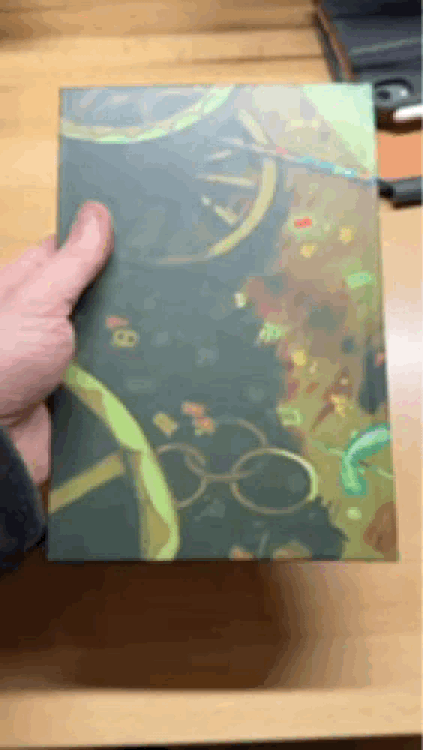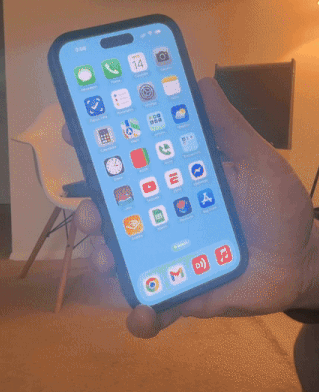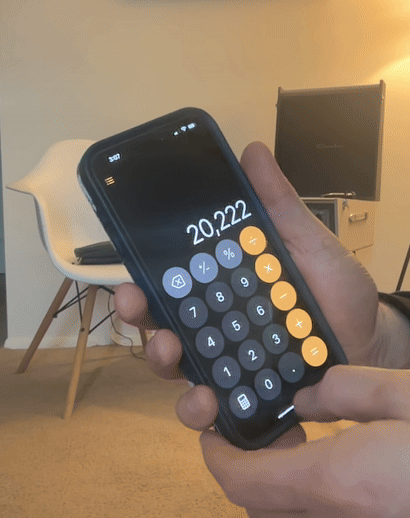Lucky You
/This is a trick I shared a couple of years ago in my newsletter. I was reminded of it recently by a few people after all the ACAAN talk the past couple of months. It’s not Any Card. And it’s not Any Number. But it’s got a similar feeling to it. It’s based on a trick by Michael Kociolek that I shared here a number of years ago.
Imagine
My friend Aubrey comes over and notices a small pile of items on my coffee table. There are some coins with numbers written on them, a folded card, a little turtle made of seashells and a small polished stone.
“What’s this for?” she asks.
“Oh, I grabbed that from my old bedroom when I visited my mom the other week. It’s my collection of good luck charms I had as kid. The stone is tiger’s eye. The turtle is something my mom brought back from a trip to North Carolina. The card is the Jack of Diamonds, which is my lucky card. And each of these coins I had in my pocket at some point when something good happened to me, so I decided they must be lucky coins.
“I didn’t necessarily believe in lucky objects as a kid. I kind of did, but kind of didn’t. My theory was that if they did exist, then their effect was probably pretty small. But I thought perhaps you could combine them in order to magnify their impact. So I started writing my lucky numbers on my lucky coins.”
“My first lucky number was 14.” I show her a penny with a 1 on one side, and a 4 on the other. “That’s the age I planned to lose my virginity. Later, I changed my lucky number to 25, because that’s the age the rest of the world thought I should lose my virginity.” I show her the coin with a 2 on one side and a 5 on the other. “Then I cycled through other lucky numbers. 36, 52, 69—of course —47.” I point out the other coins and numbers as I go.
“If I had a test, or I wanted to ask a girl out or something, I would load up my pockets with all these ‘lucky’ tokens because I thought it might have some effect. I know it’s crazy, but I really think on some level it worked. I would sometimes test it, and it seems like I’d actually get lucky more often than I should. Here, try this....”
I tell Aubrey to put the turtle and the stone in one hand, and with the other hand to shake up the coins and let them fall on the table. She does.
“Okay, so we have this random set of numbers here. That was just the way the coins happened to fall. Now I want you to make a conscious choice and turn over any two coins. Whichever ones you want.”
She turns over two coins. “So you randomly mixed the coins and dropped them. Then you consciously chose which two to turn over. Obviously, if they had fallen a different way, or you had turned over different coins, then we’d have different numbers facing up. But let’s add these up and see what we get.”
We add up the numbers facing up on the coins and they total 24.
“See! 24... that’s another lucky number of mine. Seriously.” She’s not buying it.
“Here,” I say, “Put these coins in your other hand.” She now has the stone and the turtle in one hand and the coins in her other hand. “Also, put my hat on. This is my lucky hat.” I put my hat on her head. “Take that deck,” I point to a cased deck that is also on the table. “Slide it out and count down to the 24th card.” With the items in her hands, this isn’t easy, but eventually she does. When the card is turned over, it’s revealed to be the Jack of Diamonds, matching my “Lucky Card.”
Method
Set-Up
Get yourself six coins of any denomination. It’s more interesting if you have at least a few different denominations, in my opinion.
Put them on the table so they’re all heads-side up and write these numbers, one per coin:
1-2-2-3-4-6
Then turn the coins over in their place so the tails side is showing and write these numbers across the other side:
4-5-5-6-7-9
In a deck of 53 cards (a full deck plus joker), put your force card 24 cards down in the pack.
That’s the set-up.
To force the position in the deck, this is what you need to do. You need to have the coins end up with either 2 heads and 4 tails up, or 4 tails and 2 heads up. You’re just looking for any 2-4 combination.
If after the spectator drops them on the table they’re in a 2-4 combination, you’re done.
If they’re in a 6-0 (6 of heads or tails and none of the other) say, “Okay, that part was random chance. Now make a conscious choice of any two coins to turn over.)
If they’re in a 5-1 configuration, tell them to make a conscious choice of any three to turn over.
If they’re in a 3-3 configuration, tell them to make a conscious choice of any one coin to turn over.
That’s it. The total on the top of the coins will either be 24 or 30. If it’s 30 you’ll have them count from the face of the pack. You never have to touch anything yourself. It’s a trick so self-working, Rene Lavand could do it while masturbating.
Obviously, the fun part is the little pile of lucky objects and making the person interact with all of them as they go through the trick. You can add more. You can make sure your “lucky song” is playing in the background, and that they wear your “lucky sunglasses,” and they’re chewing a piece of your “lucky gum.”
Michal originally shared the pdf of his version of the trick on my site and you can read it here. That pdf includes all the credits for the effect. Michal’s work is always worth checking out. If you don’t have Plots and Methods, the book from which his version comes from, you can pick it up from Vanishing Inc. for $25.

















